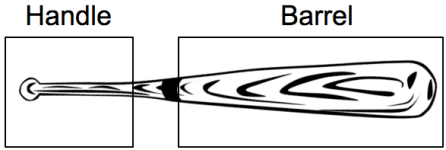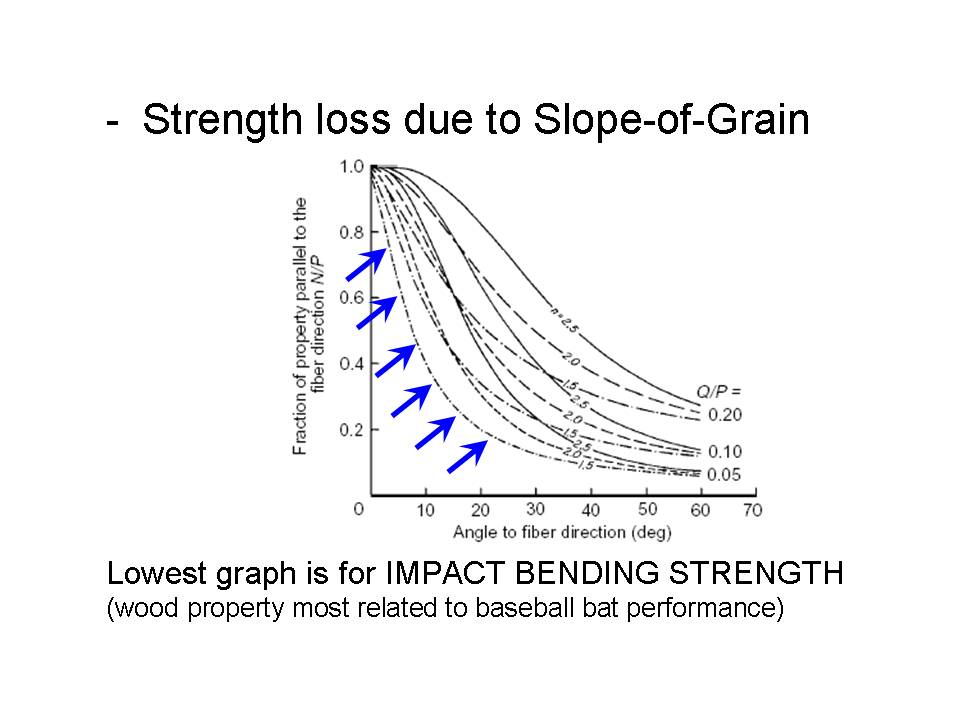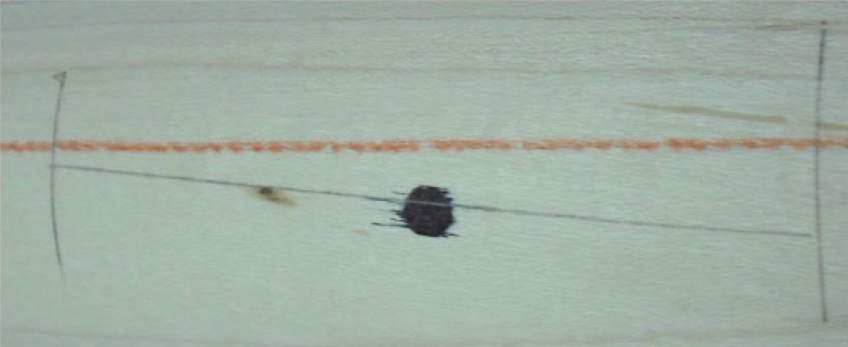
| Critical Thinking Actions Quiz | top |
Below is a list of Critical Thinking Actions:
What type of Critical Thinking Action is each of the following?
|
"I dissected the situation..." |
"I knew I had to compare..." |
|
"I grouped things together..." |
"I made sure I had all the pieces of the picture..." |
|
"I deduced from the information that..." |
"I could imagine that happening if I did..." |
|
"Although this situation was somewhat different, I knew..." |
| Mysterious Disease | top |
During the spring of 2011, an Enter Hemorrhagic E. Coli (EHEC) infection spread in Europe. The bacteria infected thousands of people and several died from the disease. Everyone who was infected had been in Germany and had eaten vegetables in Germany.
While the infection struck Germany, imported cucumbers from Spain were blamed for the outbreak. These where later excluded as the source and the false accusations cost the Spanish farmers around 280 million dollars. It was found that the probability of being infected was nine times higher among people who had eaten bean sprouts from Germany. This source was later excluded as well.
Although there was no definite proof that vegetables were causing the infection, farmers had to destroy their harvest, losing hundreds of thousands of dollars each. The food market grew skeptical toward European vegetables and Russia totally stopped the import of vegetables from European countries during this time.
What type of Critical Thinking Action is each of the following?
|
Blaming bean sprouts as the cause because the probability of being infected was nine times higher among people who had eaten sprouts from Germany. |
Applying safety precautions from other food epidemics. |
|
Finding out what method of German scientists are using to detect the bacteria. |
Finding out what bacteria caused the illness. |
|
Blaming German Vegetables. |
Finding out what vegetables the infected people had eaten. |
| Deepwater Horizon Oil Spill | top |
Deepwater Horizon, an ultra-deepwater offshore oil drilling rig, had been leased to BP ever since its maiden voyage 2001. BP used it for drilling in the Gulf of Mexico and the rig was reported to cost as much as $600,000 per day.
BP, one of the largest oil companies in the world, has had a spotty reputation for safety. Among other BP accidents is an explosion at a Texas refinery in 2005 where 15 workers died, and in 2006 there was a major oil spill from a badly corroded BP pipeline in Alaska.
In April 2010, the BP team onboard the Deepwater Horizon worked at the Macondo well. According to their plan, they decided to skip the usual cement evaluation if the cementing went smoothly. Generally, the completion rig would perform this test when it reopened the well to produce the oil the exploratory drilling had discovered. The decision was made to send the cement team home at 11:00 a.m. on the 20th of April, thus saving time and the $128,000 fee. BP Wells Team Leader John Guide noted, “Everyone involved with the job on the rig site was completely satisfied with the [cementing] job.”
The rig crew began the negative-pressure test. After relieving pressure from the well, the crew would close it off to check whether the pressure within the drill pipe would remain steady. But the pressure repeatedly built back up. As the crew conducted the test, the drill shack grew crowded. The night crew began arriving to relieve the day shift, and some VIP's from a management visibility tour came in as part of their guided tour around the platform. There seemed to be a problem but “tool pusher” Jason Anderson insisted that senior tool pusher Randy Ezel should go and eat with the dignitaries before going off his shift, being sure Anderson would call him if there was a problem. Tool pusher Wyman Wheeler was convinced that something wasn't right, but had to go off his shift and leave the situation in the hands of the night shift.
Later the same evening assistant driller Steve Curtis called Senior Toolpusher Randy Ezel who had left his day pass. “We have a situation. ...The well is blown out. . . . We have mud going to the crown.” Ezel was horrified. “Do y'all have it shut in?” Curtis: “Jason is shutting it in now. . . Randy, we need your help.” Ezell: “Steve, I'll be—I'll be right there.”
At approximately 9:45 p.m. on April 20, 2010, methane gas from the well, under high pressure, shot all the way up and out of the drill column, expanded onto the platform. The gas reached the engine room and a spark ignited the gas and the disaster ensued. Fire engulfed the platform and the workers left for the lifeboats. Eleven of the workers on Deepwater Horizon were never found.
The emergency disconnect switch (EDS), which was supposed to unlatch the blowout preventer (BOP) and shut the well, was turned on. Unfortunately the BOP did not seal the well. A few brave men stayed at the burning platform to manually try to unlatch the BOP, but without succeeding.
When the leak was finally stopped it had released about 4.9 barrels of crude oil. The total cost is still unknown but BP has established a trust fund of $20 billion to cover expenses
What type of Critical Thinking Action is each of the following?
|
Diving for parts of the flow out prevent. |
Studying the different incidents and the effect they had on the accident. |
|
Comparing the data from the pressure test performed before the accident to normal values |
Comparing BP safety procedures with other deepwater drilling companies. |
| Critical Thinking Questions | top |
Below is a list of Critical Thinking Questions (Socratic Questions):
What type of Critical Thinking Question is each of the following?
|
How are... and ... similar? |
Why do you say that? |
|
What is the difference between ... and ... ? |
Compare ... and ... with regard to ... |
|
What could we assume instead? |
What was the point of this question? |
|
What would be an example? |
What would be an alternative? |
|
Why do you say that? |
| Of Bird Droppings and Car Paint | top |
An Australian auto manufacturer where began experiencing increasing damage to the cars. Until recently the cars were shipped almost as soon as they came off the line. Now because of slow sales they remain on a lot outdoors and experience damage due to bird droppings. The car polish currently used does not remove the stains completely, and the stains are still visible after multiple buffings.
To tackle this problem, the manager assigns the following task to his technical specialist:
Find a better car polish that can remove the stains caused by bird droppings.
After collecting responses and observations, it was found that that this problem seems to occur more often on hot sunny days. To follow up on that observation, the specialist decides to go online and search for the composition of bird droppings and car paint. Upon initial research, he learns that birds excrete uric acid in their droppings. One of his colleagues remembers that acids are very corrosive and calls an old friend who majored in Material Science.
The material science friend tells him that it is difficult to develop a car paint to completely prevent the bird droppings from damaging the car, and that removing it is even tougher. After analyzing the information collected, they decide that the real problem may not be related to the kind of car polish used, but instead the fact that the sun and heat speed up the damage of car paint from uric acid.
The real problem statement is as follows:
Prevent car paint damage by first preventing the droppings from having a chance to contact the car.
What type of Critical Thinking Question is each of the following?
|
How long have the paint stains been happening? |
Why do you think the droppings are responsible for the damage? |
|
What would happen if the bird stain problem continued? |
Under what specific conditions do the droppings damage the paint? |
|
What could happen if we brought in a couple of falcons? |
Is the paint still wet when the droppings fall? |
|
Do we really have to solve this problem? |
Could the pitting in the car surface be a result of malfunctioning paint machines? |
|
Could the dropping be from small animals (chipmunks, squirrels) rather than birds? |
| Baseball Bats | top |
In 1997 woodcarver Sam Holman invented a novel method of extracting more water from maple wood. He later founded Sam Bats and started began producing maple bats for Major League Baseball (MLB) using this wood, claiming them as lighter, but still as strong as traditional ash bats. In 2001, Barry Bonds broke the single-season home run record after switching to maple bats. Other baseball players took note and believed that maple bats were superior to ash bats regardless of their tendency to shatter. Unfortunately, the number of baseball bats breaking each season increased between the 2000 and 2008 seasons. A record 2,232 bats broke in MLB from July to September 2008, forcing MLB to investigate this broken bat epidemic. MLB consulted Dave Kretschmann, a research engineer at Forest Products Laboratory to tackle the broken bat problem. Upon investigating nearly every broken bat that broke in the second half of the 2008 season, issues that made bats more prone to shattering were identified. Almost all broken bats had one or more of the following characteristics:

Upon further investigation, it was found that some bats with these three characteristics had been used for seasons without breaking. Krestschmann called in random professional baseball players and asked them to perform a series of batting simulations. Upon compiling and reviewing results, the data show no correlation between intensity of the swing and number of bats being broken. Thus, the problem is not related to the athlete, but the bat itself. Investigating further, Kretschmann discovered an even bigger problem. The main reason that bats break into multiple sharp pieces is due to the “slope of grain” in the wood, which is the maximum angle that the grain runs through the bat with respect to the longitudinal axis.

An ideal bat would have grains that run perfectly parallel to the longitudinal axis of the baseball bat. Reading past research articles showed that a 3° deviation from parallel weakens bat's strength by 20%. Kretschmann re-examined the broken bats and discovered bats that deviated by 10° or more.

More data analysis showed that maple bats were three times more likely to break than ash bats, but bats were four times more likely to break due to poor slope of the grain. Through Kretschmann's use of critical thinking questions and actions, he was able to determine the real problem (slope of grain) from the perceived problem (maple bats). To solve the real problem, tougher standards on slope of grain, and handle and barrel diameters were enforced starting with the 2009 season. In addition, all maple baseball bat manufacturers must now place an ink dot on the handle of the wood bat. When an ink dot is placed on the raw wood surface, the ink bleeds along the wood grain. This bleeding highlights the direction of the wood grain, and thus allows inspectors to confiscate bats that do not meet standards.

What type of Critical Thinking Question is each of the following?
|
Why do you think Dan said the bats were lighter? |
Are lighter bats weaker than heavier bats? |
|
Could the bat shapes and wood grain cause it to break? |
What are the similarities and differences in the properties between maple and ash woods? |
|
Could the smaller handle be the cause of the breaking bats? |
Could we assume that the baseballs were changed in 2008? |
|
Are breaking bats dangerous? |
Is their breakage costing MLB a significant amount of money? |
|
What are the examples of things that would cause the bats to break? |
Could it be that the batters whose bats are breaking are taking a new grip on the bat? |
What type of Critical Thinking Question is each of the following?
|
Why do we need to solve the problem of the bats, breaking? |
When you are counting the number of broken bats are you considering only those bats that separate parts to be broken or are you including a crack in the bat as being broken? |
|
What are some of the things that could cause a bat to break? |
Who should be responding to the breaking of the bats? The MLB? The individual clubs? The manufacturer? |
|
What would you do if it’s how the batters hold the bats that causes the problem? |
What would happen if we changed back to the pre 2008 bats? |
|
Why do you think it’s the ash that is causing the bat to break? |
Where are the bats breaking (the handle, middle, end of the bat)? |